
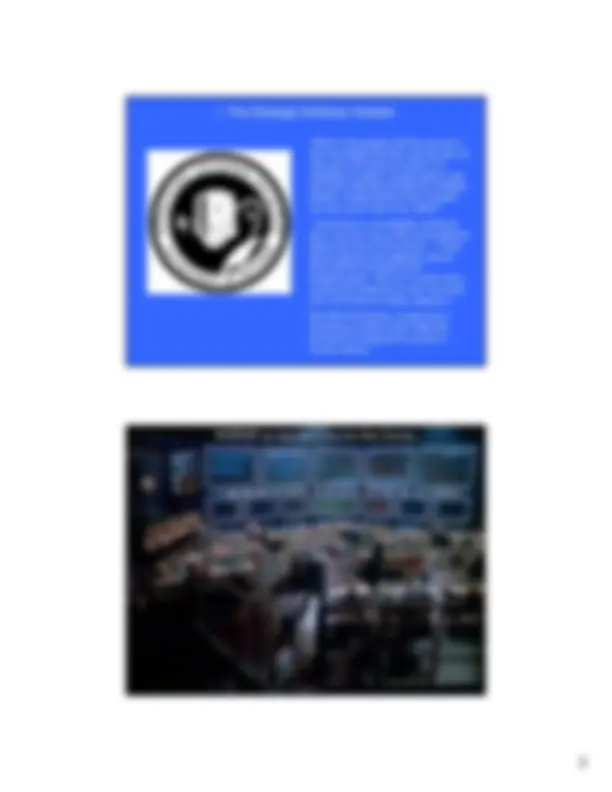
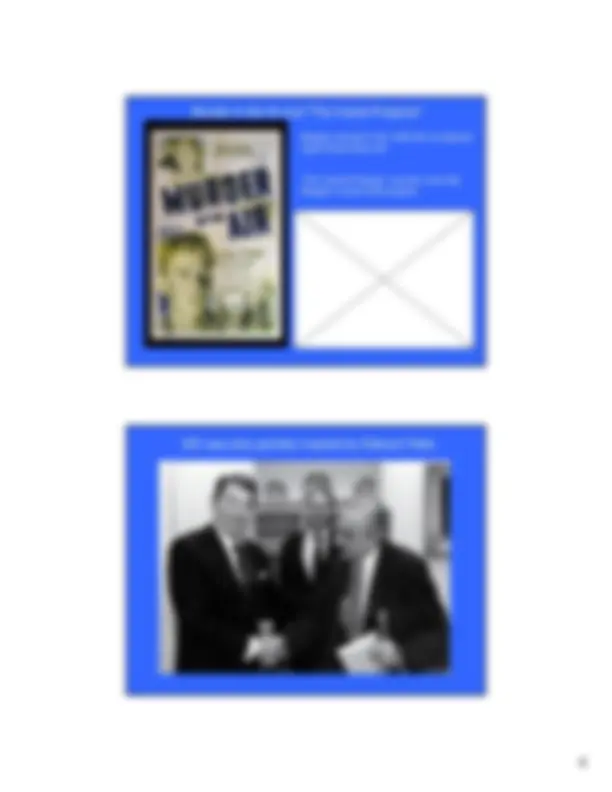
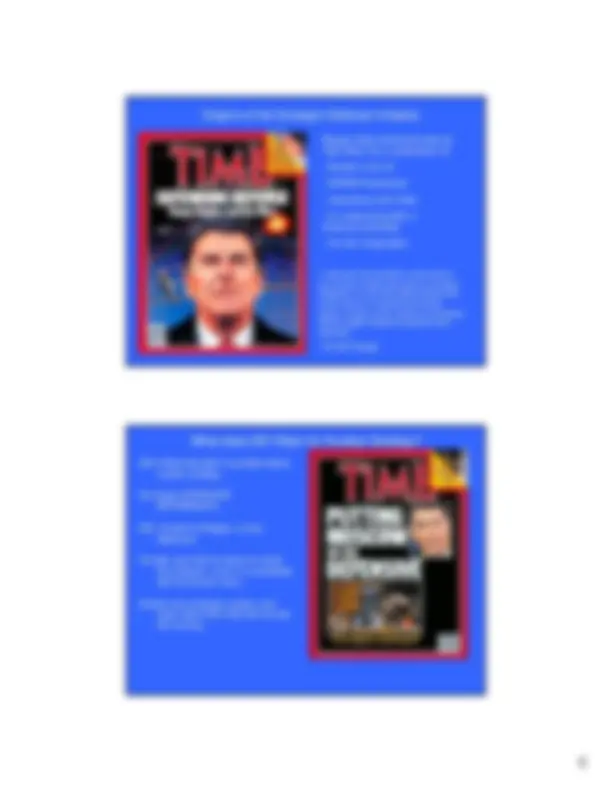
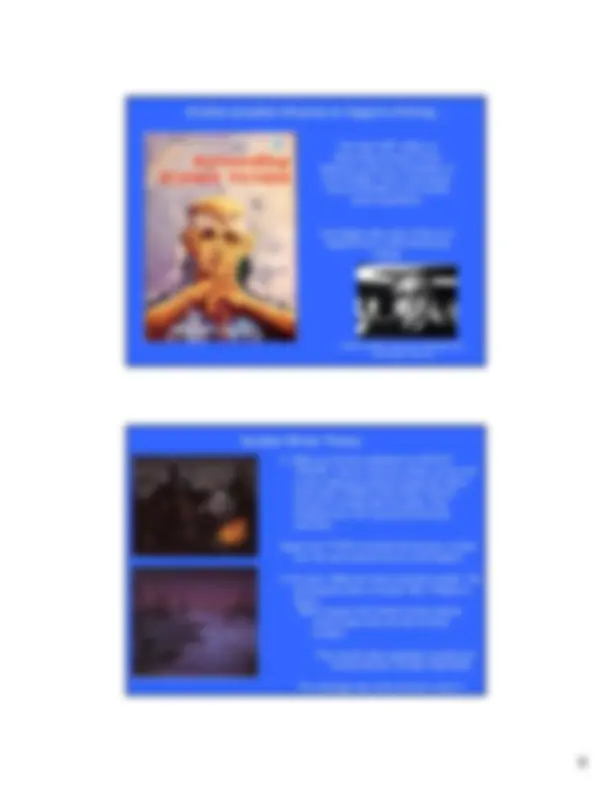
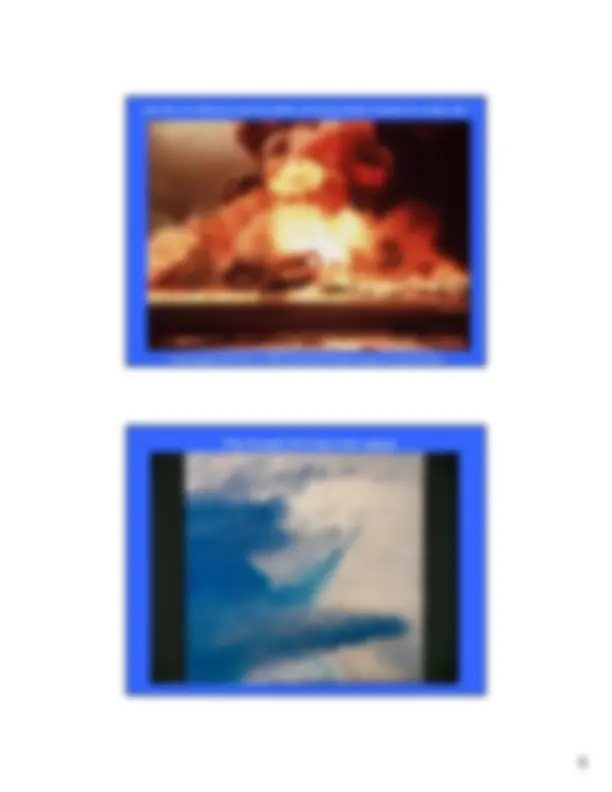
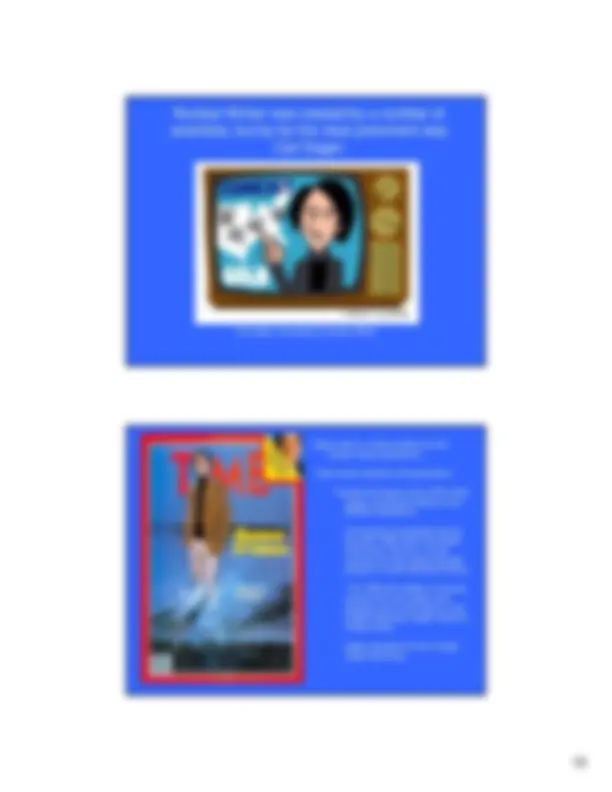
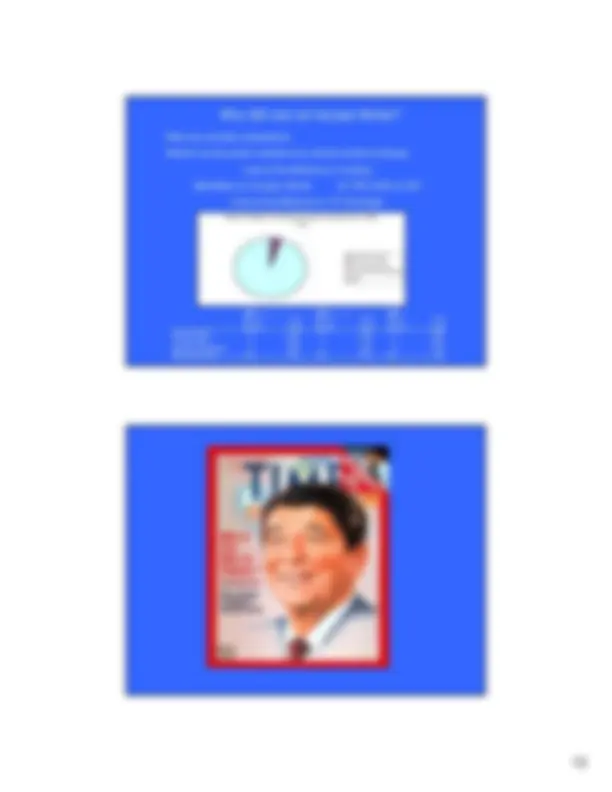



Study with the several resources on Docsity

Earn points by helping other students or get them with a premium plan


Prepare for your exams
Study with the several resources on Docsity

Earn points to download
Earn points by helping other students or get them with a premium plan
Community
Ask the community for help and clear up your study doubts
Discover the best universities in your country according to Docsity users
Free resources
Download our free guides on studying techniques, anxiety management strategies, and thesis advice from Docsity tutors
The political and scientific debates surrounding nuclear strategy during the reagan era, focusing on the ideas of nuclear winter and the strategic defense initiative (sdi). Key figures such as ronald reagan, carl sagan, and their opposing views on nuclear war and defense. It also touches upon the impact of films like 'the day after' and 'star wars' on public perception and policy.
Typology: Study notes
1 / 14

This page cannot be seen from the preview
Don't miss anything!









Week 8--Film: The Day After
Terms: Ronald Reagan Carl Sagan Neo-Conservative TTAPS Team B The Day After Richard Pipes Richard Perle Irving Krystol Nuclear Freeze Evil Empire Reaganomics Strategic Defensive Initiative KAL 007 Able Archer ’83 Nuclear Winter Casper Weinberger Mikhail Gorbachev Committee on the Present Danger Afghanistan
Questions to consider:
Which idea seemed more plausible: Nuclear Winter or SDI? Why? What were some events/themes/ideas/people that supported the resurgence of Conservatism in the 1980s? Why does 1983 mark a new high-point in atomic anxiety?
Nena – 99 Luftballoons (translated from German) Do you have some time for me? Then I’ll sing a song for you; About 99 Balloons, on their way to the horizon; Are you perhaps thinking of me? Then I’ll sing a song for you; About 99 Balloons; And that something like war comes from such a thing 99 Balloons on their way to the horizon; They thought they were UFOs from Space; So a general sent a flying squad out there; To raise the alarm if it was true Yet on the horizon were on 99 Balloons; 99 Jet planes, each one was a great warrior ; Thought that they were Captain Kirk, there were great fireworks The neighborhood had failed to understand; and they felt harassed; still they shot on the horizon, 99 Balloons 99 Ministers of War, Matches and Gas Cans, Thought they were clever people; Caught up in glory of war; Shouted “WAR” and sought power; Man!, who would have thought? That one day it would come to this from 99 Balloons? 99 years of war; there are no victors; there are no ministers of war left; and no jet planes either; today I’m doing my rounds; seeing the world in ruins; found a balloon and thought of you, and let it fly
“One can think of no other subject from foreign policy to the economy that a network would dare to present in such a one dimensional manner.”
The film had a clear goal: “removing tactical nuclear missiles from the European theater.”
“Let’s reject the vision of The Day After. Let’s reject it! Let’s reject it for us and let’s reject its despair and doom and gloom for our children.”
-Preacher, Lawrence, KS
One parent advised his children not to worry, that regarding nuclear war: “Adults are working on that. You don’t need to worry about that.”
The film was nothing more than a “two and a half hour commercial for the Kremlin, and they didn’t even have to put KGB actors in it.”
Reagan starred in this 1940 film as Special Agent Brass Bancroft
“The Inertia Projector” sounds much like Reagan’s future SDI program
“I call upon the scientific community in our country, those who gave us nuclear weapons, to turn their great talents now to the cause of mankind and world peace, to give us the means of rendering these nuclear weapons impotent and obsolete.”
Reagan likely birthed the idea for “Star Wars” by a combination of:
SDI shifted decades’ long ideas about nuclear strategy.
No longer OFFENSIVE DETERRENTS.
SDI, at least to Reagan, is truly defensive.
He later says that he wants to share this program, once it is completed, with the Soviet Union.
Soviets are confused, scared, and angry about SDI; they did not see this coming.
Carl Sagan
This April 1957 edition of Astounding Science Fiction featured a story by Christopher of Anvil entitled “Torch” that shares many similarities to the nuclear winter hypothesis.
Carl Sagan was a fan of this sci-fi magazine as a child and during college.
It also sounds a lot like Dr. Strangelove’s “Doomsday” Shroud
In 1980 Luis Alvarez published his IMPACT THEORY: that an asteroid collision at the end of the Cretaceous period (roughly 65 million years ago) created a dust cloud massive enough to encapsulate the globe, drop temperatures, and caused the dinosaur extinction
Sagan and TTAPS conclude that during a nuclear war, the same phenomenon could happen.
In the early 1980s two other scientists publish “The Atmosphere After a Nuclear War: Twilight at Noon,” Which argues that limited nuclear attacks could create soot and ash to block sunlight.
This would make vegetation growth and food production virtually impossible.
The message was clear and grim: even in i i l i l li it d
Carl Sagan “forecasting” Nuclear Winter
Sagan was in a unique position be the nuclear winter spokesman:
Carl Sagan in his rad leather jacket.
Both are uncertain propositions
Neither can be proven outside of an actual nuclear exchange
Look at the difference in funding: $50 Million for Nuclear Winter $1 TRILLION for SDI Look at the difference in TV Coverage: Network Television Coverage on issues of Nuclear War, 1982- 1986
Nuclear Winter "The Day After" Nuclear War-fighting SDI
ABC CBS NBC No. of Total No. of Total No. of Total Stories Time Stories Time stories Time Nuclear Winter 3 2:40 3 3:50 4 5: The Day After 5 10:40 3 7:10 2 3: Nuclear War-fighting 0 0:00 1 4:20 3 11: SDI (“Star Wars”) 152 N/A 132 N/A 153 N/A